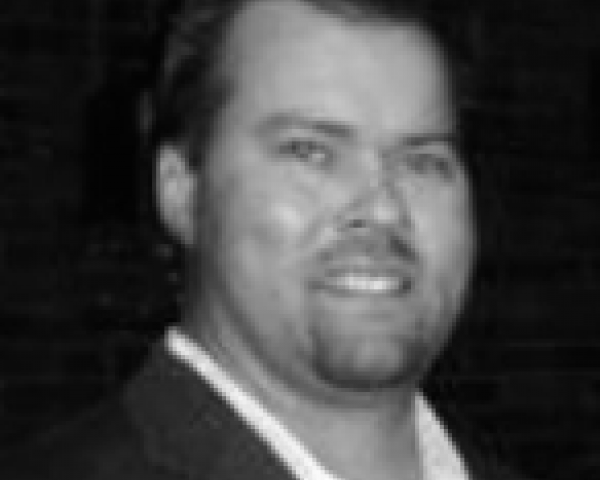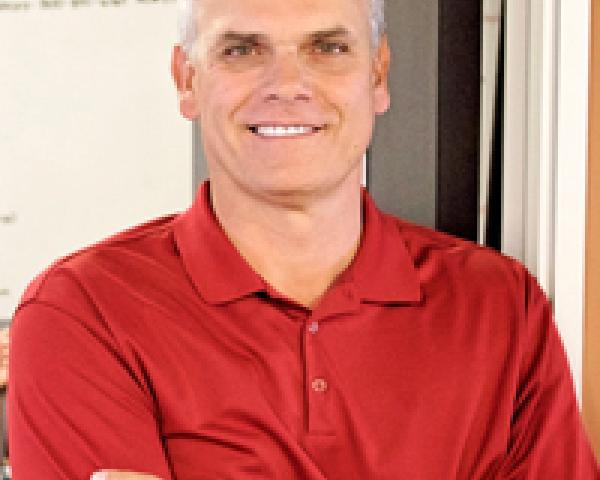Why InsurTech Should Be Like Football
Football depends on shoring up the weakest link, while basketball relies on the strongest player. Insurtech needs to emulate football.

Football depends on shoring up the weakest link, while basketball relies on the strongest player. Insurtech needs to emulate football.

Get Involved
Our authors are what set Insurance Thought Leadership apart.
|
Partner with us
We’d love to talk to you about how we can improve your marketing ROI.
|

Nick Martin is the manager of the Polar Capital Global Insurance Fund. He is a mentor on the Startupbootcamp InsurTech program and likes to help startups navigate a complex industry.
Each generation provides different skills in the workplace. This infographic explores how to build the right mix.

Based on when we’re born, we’re automatically a member of a generation, a group that’s generally been exposed to the same influences, events, and pressures. For those reasons, those groups, or generations, often exhibit shared characteristics. Luckily, each generation has something different and valuable to offer the workplace.
Take the youngest people in your office: They’re called millennials. They’ve never known a world without computers or smart devices, making them extremely technologically savvy. They also tend to be more socially responsible and in search of work-life balance.
At the other end of the age spectrum are silents. This group, the last of whom was born in 1945, are marked by their loyalty and work ethic, among other traits.
How will the various groups affect your company, and how can you mix them with success? Use this graphic to find out. This image was originally created by AkkenCloud and can be found here.
This image was originally created by AkkenCloud and can be found here.
Get Involved
Our authors are what set Insurance Thought Leadership apart.
|
Partner with us
We’d love to talk to you about how we can improve your marketing ROI.
|

Mark Wallace is an experienced leader who helps businesses and entrepreneurs to accelerate growth. He founded Justellus, a company that provides executive level sales and marketing services. He headed sales for Sonicbids, Mzinga and Shared Insights.
A recently enacted rule means many healthcare programs have to make websites fully accessible to those with disabilities.

Get Involved
Our authors are what set Insurance Thought Leadership apart.
|
Partner with us
We’d love to talk to you about how we can improve your marketing ROI.
|

Alexis Gilroy advises health care and technology companies on health care/corporate matters emphasizing digital health topics (telemedicine, telehealth, and mobile health). Gilroy has broad experience with practical/legal needs of health care companies in the evolving global health care market.
As much fun as it is to shame Mylan, a better way to punish the company would be to buy the lower-cost alternatives.

 Next, how easy is it for us to choose these EpiPen alternatives? This is where the friction starts. Unfortunately, most physicians aren’t aware of the available options because most pharmacy benefit managers (PBM) and health plan formularies exclude them, making choice virtually impossible. To understand why, let’s consider who really makes drug-purchasing decisions. A drug purchase starts with a prescription written by a physician. So are physicians responsible for the EpiPen monopoly? Partially. Rather than prescribing EpiPens, physicians should prescribe epinephrine auto-injectors, of which there are multiple options in the market.
What’s the consumer’s and taxpayer’s next line of defense? Wasn’t this why an intermediary, such as a plan or a PBM, was hired in the first place? Yes. Then, why does our advocate, the intermediary, steer us in the direction of the highest-cost option?
Unfortunately, the financial incentives don’t work the way we think they do. Intermediaries don’t make decisions based on what is best for the actual payer. Rather, they participate with manufacturers in complex rebate schemes (really kickbacks, even if they don’t meet the legal definition), allowing them to collect steep profits on brand drugs.
Bresch states that Mylan pays rebates in excess of $300 to intermediaries who aren’t passing them back to the payer. This isn’t altruism; instead, all drug manufacturers know the intermediaries keep large portions of their rebates. This profit incentive is the mechanism that kicks competing drugs out of PBM and plan formularies, locks out competitors, drives market share and creates monopoly (or near-monopoly) conditions.
Let’s review how drug purchases are made in today’s dysfunctional system:
Next, how easy is it for us to choose these EpiPen alternatives? This is where the friction starts. Unfortunately, most physicians aren’t aware of the available options because most pharmacy benefit managers (PBM) and health plan formularies exclude them, making choice virtually impossible. To understand why, let’s consider who really makes drug-purchasing decisions. A drug purchase starts with a prescription written by a physician. So are physicians responsible for the EpiPen monopoly? Partially. Rather than prescribing EpiPens, physicians should prescribe epinephrine auto-injectors, of which there are multiple options in the market.
What’s the consumer’s and taxpayer’s next line of defense? Wasn’t this why an intermediary, such as a plan or a PBM, was hired in the first place? Yes. Then, why does our advocate, the intermediary, steer us in the direction of the highest-cost option?
Unfortunately, the financial incentives don’t work the way we think they do. Intermediaries don’t make decisions based on what is best for the actual payer. Rather, they participate with manufacturers in complex rebate schemes (really kickbacks, even if they don’t meet the legal definition), allowing them to collect steep profits on brand drugs.
Bresch states that Mylan pays rebates in excess of $300 to intermediaries who aren’t passing them back to the payer. This isn’t altruism; instead, all drug manufacturers know the intermediaries keep large portions of their rebates. This profit incentive is the mechanism that kicks competing drugs out of PBM and plan formularies, locks out competitors, drives market share and creates monopoly (or near-monopoly) conditions.
Let’s review how drug purchases are made in today’s dysfunctional system:
Get Involved
Our authors are what set Insurance Thought Leadership apart.
|
Partner with us
We’d love to talk to you about how we can improve your marketing ROI.
|

Pramod John is the founder and CEO at Vivo Health. Pramod John is team leader of VIVIO Health, a startup that’s solving out of control specialty drug costs; a vexing problem faced by self-insured employers. To do this, VIVIO Health is reinventing the supply side of the specialty drug industry.
It is crucial to understand when a blockchain can be useful -- and when it cannot. Here is a primer.

Get Involved
Our authors are what set Insurance Thought Leadership apart.
|
Partner with us
We’d love to talk to you about how we can improve your marketing ROI.
|

Daniel R. Robles, PE, MBA is the founder of The Ingenesist Project (TIP), whose objective is to research, develop and publish applications of blockchain technology related to the financial services and infrastructure engineering industries.
It does not take a rocket scientist to understand that virtually every type of property/casualty insurance will be affected.

The progress of mankind has relied heavily on technology advancement in two key areas: transportation and communications. Communications technologies, for moving information from one place to another and presenting that information to people in new and different ways, have been instrumental to the progress of civilization. Transportation technologies, for moving people and things from one place to another in faster, safer, and more comfortable ways, have been advancing since the invention of the wheel. This blog will reflect on the latter, looking into the next decade and exploring some big implications for the insurance industry.
Driverless vehicles have been grabbing the headlines now for a few years. That’s understandable since most of us can relate to driving a car and are forming opinions on what we think about the move to autonomous vehicles. However, the effort by the major tech companies and auto manufacturers to develop and test these capabilities in cars is only one part of a much larger story – one that will greatly affect every person, business, and industry. And just as significant is the progress being made with many other types of vehicles that operate on land, sea, or in the air. Add in the evolution toward a smart transportation infrastructure, and the ingredients for massive transformation are ready and waiting. Much of what is happening in this realm seems like science fiction, but is likely to be common in ten years. Consider how much can happen in that time frame. Just ten years ago (in 2006), the iPhone had not even been introduced. There were no mobile apps. Now, we can’t imagine what life would be like without our mobile devices.
See also: Connected Vehicles Can Improve Claims
Some of the other developments that are worth following include live trials of autonomous buses and taxis; the platooning of autonomous trucks; autonomous cargo ships, submarines, and drones; and autonomous commercial vehicles used in mining and agriculture. And don’t forget flying cars. This technology is actually gaining attention and funding. Add in the Hyperloop concept (the testing of which is now underway), supersonic air travel, and other means of high-tech transportation, and it is not difficult to imagine the kind of world we see in Star Trek, Star Wars, or other popular science fiction.
The advancement of autonomous vehicles of all sorts will be accompanied by progress in vehicle-to-vehicle (V2V) and vehicle-to-infrastructure (V2I) technologies that allow moving vehicles to communicate with each other and their surroundings to ensure the smooth and safe flow of traffic, wherever it may be. So what does this all mean for insurance? Well, it does not take a rocket scientist to understand that virtually every type of property/casualty insurance will be affected in fundamental ways. Some of these scenarios have already been touted in the press and considered by industry strategists, but the implications may be even more far reaching than most realize. Consider implications in just three areas:
The list goes on, and it’s pretty heady stuff. The implications for population distribution, energy, travel, education, and virtually every aspect of the economy are huge. In all of these areas, the patterns change, the companies change, individual’s behaviors change, and the risks change. Existing risks may be dramatically reduced, resulting in large decreases in premiums. On the other hand, new risks are emerging, and the opportunities to serve customers in new ways are there for insurers bold enough and agile enough to rethink their business for this new era.
See also: Are You Ready for the Next Disaster?
For more on the implications of emerging tech for insurance, see SMA’s research report, The Top 10 Ways Emerging Tech Will Transform Insurance.
Get Involved
Our authors are what set Insurance Thought Leadership apart.
|
Partner with us
We’d love to talk to you about how we can improve your marketing ROI.
|

Mark Breading is a partner at Strategy Meets Action, a Resource Pro company that helps insurers develop and validate their IT strategies and plans, better understand how their investments measure up in today's highly competitive environment and gain clarity on solution options and vendor selection.
Everyone is talking about the dangers of “opioid addiction,” but here’s the thing: The media – and the public – are missing the point entirely.

Get Involved
Our authors are what set Insurance Thought Leadership apart.
|
Partner with us
We’d love to talk to you about how we can improve your marketing ROI.
|

David Berg is co-founder and chairman of the board of Redirect Health. He helps oversee operations and develops innovative ways to enhance the company’s processes and procedures for identifying the most cost-efficient, high-quality routes for common healthcare needs.
Are larger, established insurers destined to be lethargic and slow off the mark, or can they become agile and innovative?

Get Involved
Our authors are what set Insurance Thought Leadership apart.
|
Partner with us
We’d love to talk to you about how we can improve your marketing ROI.
|

Vidyesh Khanolkar has more than 20 years of experience in information technology on the service provider and customer side. He has large program delivery experience and profitability and P&L management experience across North America, the UK and Asia Pacific in the insurance technology sector.
InsurTech and traditional carriers should both win by removing "blockages" in the system and growing the overall pie.

Get Involved
Our authors are what set Insurance Thought Leadership apart.
|
Partner with us
We’d love to talk to you about how we can improve your marketing ROI.
|

Nick Martin is the manager of the Polar Capital Global Insurance Fund. He is a mentor on the Startupbootcamp InsurTech program and likes to help startups navigate a complex industry.
Destruction and rebuilding are a predictable cycle. So why don't we just build homes that are more tornado-resistant? We can.

Get Involved
Our authors are what set Insurance Thought Leadership apart.
|
Partner with us
We’d love to talk to you about how we can improve your marketing ROI.
|